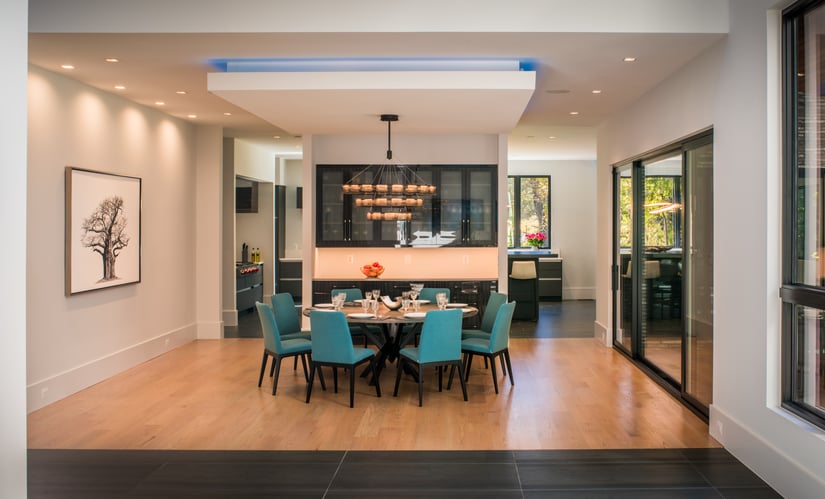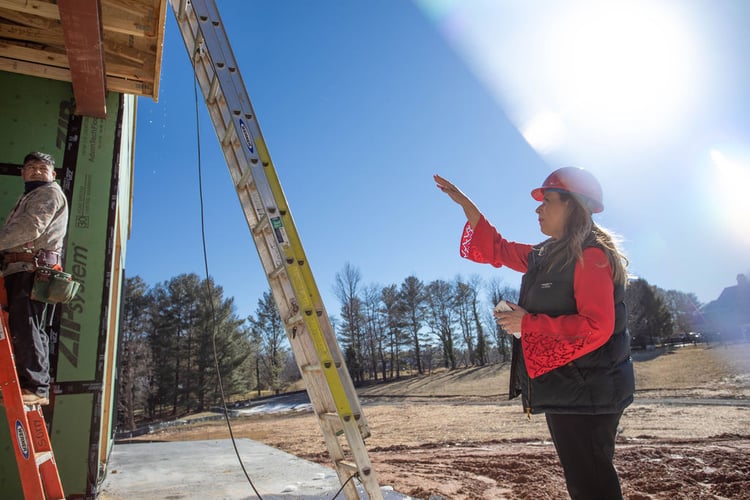How Smart Cities Are Shaping Real Estate and Construction Trends
November 9th, 2025
3 min. read

Cities are changing fast. Population growth, climate concerns, and new technology are reshaping how we live. For homeowners and investors, this raises big questions. Will today’s neighborhoods still make sense 10 years from now? How will technology affect home values? For planners, the challenge is to build places that are efficient, sustainable, and still feel like real communities.
Smart cities use technology and data to make daily life easier. Traffic lights that adjust automatically, buildings managing their own energy use, and neighborhoods tracking air quality are just the beginning. The integration of smart utilities also reduces operating costs, making homes and neighborhoods more efficient and appealing. Homes with advanced water, energy, and waste systems are increasingly attractive to buyers seeking both sustainability and savings.
At AV Architects + Builders, we see this shift every day. Buyers are asking about sustainability, energy savings, and future-proof features. Planners want to know how new communities can support digital and green living. Building a home today is about more than design and comfort. It is about ensuring it fits into the evolving landscape of smart city development, as explored in real estate case studies from across the US.
This blog will help you understand what smart cities mean for you as a buyer or planner, the trends shaping real estate and construction, and how to make choices that stay relevant in the years ahead.

What Is a Smart City
A smart city uses technology and design to improve daily life, focusing on efficiency, safety, and sustainability. Sensors, data, and digital systems help run transport, utilities, and waste collection. For buyers, this means homes that stay connected and valuable. For planners, this means creating neighborhoods where technology is integrated from the start.
In a smart city, you will notice things like
- Traffic lights and transit systems that adjust to real-time conditions
- Buildings that monitor energy and water use automatically
- Public spaces with sensors for air quality, noise, and waste
- High-speed internet and seamless communication networks
- Integrated green spaces and sustainable infrastructure
The key is connectivity. Smart homes, streets, and public services all communicate to make life smoother, safer, and more efficient. Learning about how smart homes integrate these technologies can help buyers make informed choices.
Smart Homes and Their Role
Smart homes are the building blocks of smart cities. They automate lighting, heating, security, and energy management. Beyond convenience, they communicate with the neighborhood and city systems. Thermostats adjust based on local energy demand, security integrates with city safety alerts, and water and waste systems optimize usage across the neighborhood.
Smart homes increase efficiency, cut costs, and make communities more resilient. Homes that are energy-efficient, connected, and flexible retain value as technology and city infrastructure evolve. Whether considering custom smart homes, solar-ready designs, or advanced HVAC systems, buyers can future-proof their investments while planners benefit from cohesive, tech-integrated neighborhoods.
People, Property, and Land The Human Factor
Technology alone does not make a city smart. People do. Residents, buyers, and planners shape how a city functions. Engaged and informed citizens know how to use technology, support sustainability, and make decisions that benefit the community.
Smart city planning also drives property and land value. Land in connected, tech-enabled neighborhoods becomes more desirable. Homes with energy efficiency, connectivity, and sustainable features attract higher demand. Forward-looking urban planning protects investment and increases long-term value. Communities thrive when residents actively participate, emphasizing that smart cities are built by smart people, not smart devices.
Smart Mobility and Mixed-Use Communities
Smart transportation and walkable neighborhoods play a major role in property appeal. Homes located near transit hubs, bike-sharing stations, and connected roads increase in value. Mixed-use developments, where residential, commercial, and recreational spaces coexist, create vibrant and convenient communities. Buyers benefit from shorter commute times and easy access to amenities. For planners, these designs make traffic management and overall city growth more efficient while improving livability. Cities that integrate smart mixed-use environments redefine urban spaces and attract more investment.

© 2025 AV Architects + Builders. All Rights Reserved
Smart Utilities and Lower Operating Costs
Connected energy, water, and waste systems reduce household operating costs. Homes equipped with smart utilities attract buyers who prioritize efficiency and savings. Integrating these systems into neighborhoods also reduces infrastructure maintenance and supports sustainable growth. Smart utilities management provides measurable benefits, making it a key factor in future-proofing both homes and communities.
Real Estate Investment and Community Value
Smart infrastructure drives property demand and long-term investment potential. Early buyers and investors often see faster appreciation in neighborhoods that integrate smart technologies. Communities with high resident engagement in sustainability and city planning tend to have higher social value, which increases property desirability. Proactive residents make it easier for planners to implement projects and maintain livable, connected neighborhoods. Smart cities influence real estate investment and create opportunities for growth nationwide.
The Role of AV Architects + Builders
Firms like AV Architects + Builders bridge vision and reality. We design homes ready for smart living, integrating digital systems, energy efficiency, and flexible spaces. We align custom homes with larger city and community goals, guiding buyers to future-proof investments and supporting planners in creating connected, sustainable neighborhoods. Whether planning for solar panels, smart security systems, or home automation, our approach ensures homes remain relevant and valuable.
 The Solar House, Arlington, Virginia, AV Architects + Builders, Photography by Maxwell Mackenzie
The Solar House, Arlington, Virginia, AV Architects + Builders, Photography by Maxwell Mackenzie
Turning Smart City Vision into Action
Smart cities are no longer a distant idea. They shape property values, design choices, and planning decisions. For buyers, it is about choosing homes built for the future. For planners, it is about designing cities that can evolve over time.
At AV Architects + Builders, we help clients understand these changes and make the right choices. Schedule a discovery call to discuss your goals and visit our Learning Center for resources that simplify urban planning and real estate.
Topics:


